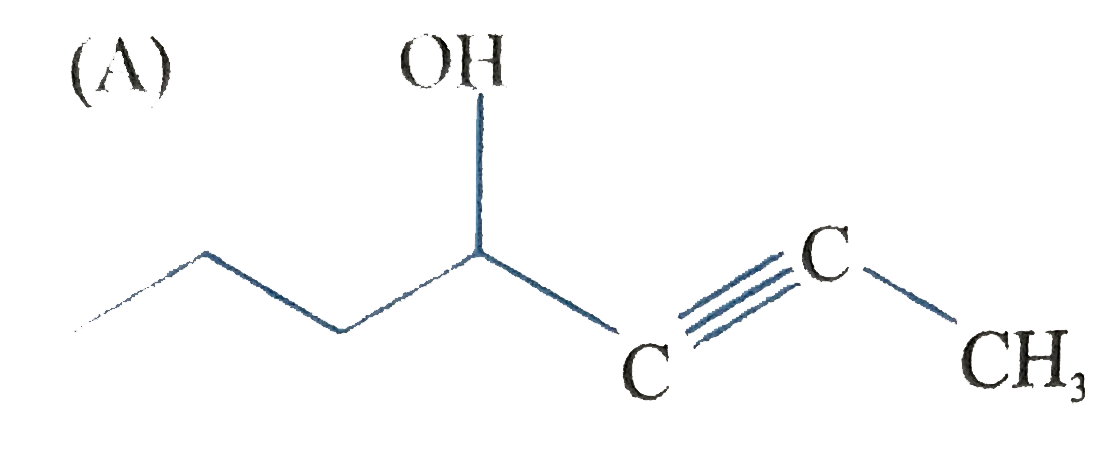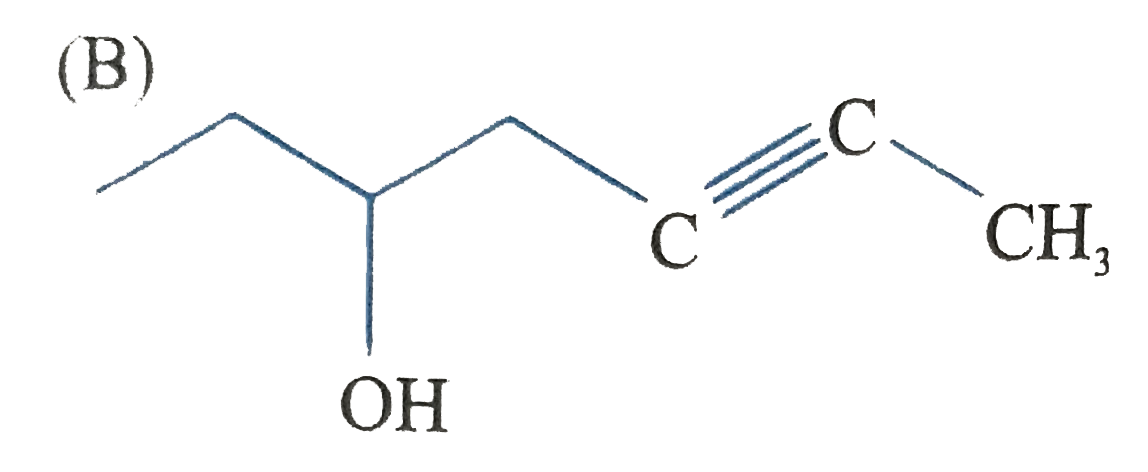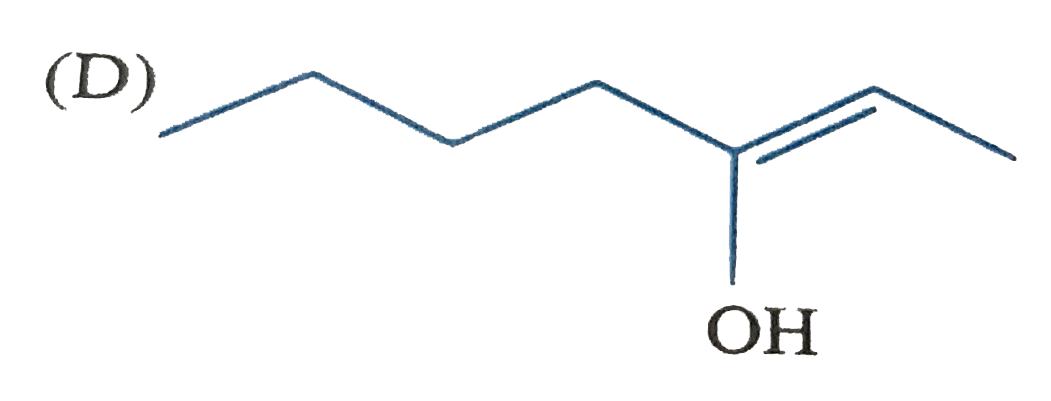(i) Discuss the concept of hybridisation. What are its different types in a carbon atom.
(ii) What is the type of hybridisation of carbon atoms marked with star.
(a) ∗CH2=CH−O∗||C−O−H
(b) CH3−∗CH2−OH
(c ) CH3−CH2−O∗||C−H
(d ) ∗CH3−CH=CH−CH3
(e ) CH3−∗C≡CH
Step-by-Step Solution
1. Definition of Hybridization:
- Hybridization is the process of mixing atomic orbitals to form new hybrid orbitals. These hybrid orbitals have different energies and shapes compared to the original atomic orbitals.
2. Formation of Hybrid Orbitals:
- When two or more atomic orbitals combine, they form hybrid orbitals. The number of hybrid orbitals formed is equal to the number of atomic orbitals mixed. For example, mixing one s orbital and three p orbitals results in four sp³ hybrid orbitals.
3. Characteristics of Hybrid Orbitals:
- Hybrid orbitals can have the same or different energies compared to the original atomic orbitals.
- They are used to form sigma bonds in molecules, while pi bonds are formed from unhybridized orbitals.
4. Types of Hybridization in Carbon:
- sp³ Hybridization: Occurs when one s and three p orbitals mix, forming four equivalent sp³ hybrid orbitals. Example: Methane (CH₄).
- sp² Hybridization: Occurs when one s and two p orbitals mix, forming three equivalent sp² hybrid orbitals and one unhybridized p orbital. Example: Ethylene (C₂H₄).
- sp Hybridization: Occurs when one s and one p orbital mix, forming two equivalent sp hybrid orbitals and two unhybridized p orbitals. Example: Acetylene (C₂H₂).
(ii) Type of Hybridization of Carbon Atoms Marked with Star
1. (a) <strong>CH₂=CH−O<strong>||C−O−H:
- The starred carbons are involved in a double bond (C=C) and have one single bond to another carbon and one to an oxygen.
- Each starred carbon forms three sigma bonds (two with hydrogen and one with another carbon) and has one pi bond.
- Hybridization: sp².
2. (b) CH₃−<strong>CH₂−OH:
- The starred carbon is bonded to three hydrogens and one hydroxyl group (OH).
- This carbon forms four sigma bonds.
- Hybridization: sp³.
3. (c) CH₃−CH₂−O<strong>||C−H:
- The starred carbon is part of a carbonyl group (C=O) and is bonded to two other carbons and one hydrogen.
- This carbon forms three sigma bonds and one pi bond.
- Hybridization: sp².
4. (d) <strong>CH₃−CH=CH−CH₃:
- The starred carbon is involved in a double bond (C=C) and is bonded to three other carbons.
- This carbon forms three sigma bonds and has one pi bond.
- Hybridization: sp².
5. (e) CH₃−<strong>C≡CH:
- The starred carbon is part of a triple bond (C≡C) and is bonded to one carbon and three hydrogens.
- This carbon forms one sigma bond and two pi bonds.
- Hybridization: sp.
- Hybridization is the process of mixing atomic orbitals to form new hybrid orbitals. These hybrid orbitals have different energies and shapes compared to the original atomic orbitals.
- When two or more atomic orbitals combine, they form hybrid orbitals. The number of hybrid orbitals formed is equal to the number of atomic orbitals mixed. For example, mixing one s orbital and three p orbitals results in four sp³ hybrid orbitals.
- Hybrid orbitals can have the same or different energies compared to the original atomic orbitals.
- They are used to form sigma bonds in molecules, while pi bonds are formed from unhybridized orbitals.
- sp³ Hybridization: Occurs when one s and three p orbitals mix, forming four equivalent sp³ hybrid orbitals. Example: Methane (CH₄).
- sp² Hybridization: Occurs when one s and two p orbitals mix, forming three equivalent sp² hybrid orbitals and one unhybridized p orbital. Example: Ethylene (C₂H₄).
- sp Hybridization: Occurs when one s and one p orbital mix, forming two equivalent sp hybrid orbitals and two unhybridized p orbitals. Example: Acetylene (C₂H₂).
- The starred carbons are involved in a double bond (C=C) and have one single bond to another carbon and one to an oxygen.
- Each starred carbon forms three sigma bonds (two with hydrogen and one with another carbon) and has one pi bond.
- Hybridization: sp².
- The starred carbon is bonded to three hydrogens and one hydroxyl group (OH).
- This carbon forms four sigma bonds.
- Hybridization: sp³.
- The starred carbon is part of a carbonyl group (C=O) and is bonded to two other carbons and one hydrogen.
- This carbon forms three sigma bonds and one pi bond.
- Hybridization: sp².
- The starred carbon is involved in a double bond (C=C) and is bonded to three other carbons.
- This carbon forms three sigma bonds and has one pi bond.
- Hybridization: sp².
- The starred carbon is part of a triple bond (C≡C) and is bonded to one carbon and three hydrogens.
- This carbon forms one sigma bond and two pi bonds.
- Hybridization: sp.
Topper's Solved these Questions
- CHEMICAL BONDING AND MOLECULAR STRUCTUREBOOK - MODERN PUBLICATIONCHAPTER - CHEMICAL BONDING AND MOLECULAR STRUCTUREEXERCISE - NCERT (Exemplar Problems) (MCQ Based on Given Comprehension)
4 Videos
- CHEMICAL BONDING AND MOLECULAR STRUCTUREBOOK - MODERN PUBLICATIONCHAPTER - CHEMICAL BONDING AND MOLECULAR STRUCTUREEXERCISE - Revision Exercises (Objective Questions)(Passage Based Questions)
10 Videos
- CHEMICAL BONDING AND MOLECULAR STRUCTUREBOOK - MODERN PUBLICATIONCHAPTER - CHEMICAL BONDING AND MOLECULAR STRUCTUREEXERCISE - NCERT (Exemplar Problems) (Assertion and Reason Type Questions)
3 Videos
- CLASSIFICATION OF ELEMENTS AND PERIODICITY IN PROPERTIES BOOK - MODERN PUBLICATIONCHAPTER - CLASSIFICATION OF ELEMENTS AND PERIODICITY IN PROPERTIES EXERCISE - UNIT PRACTICE TEST
13 Videos
Similar Questions
(i) Discuss the concept of hybridisation. What are its different types in a carbon atom.
(ii) What is the type of hybridisation of carbon atoms marked with star.
(a) ∗CH2=CH−O∗||C−O−H
(b) CH3−∗CH2−OH
(c ) CH3−CH2−O∗||C−H
(d ) ∗CH3−CH=CH−CH3
(e ) CH3−∗C≡CH
View SolutionDiscuss the concept of hybridisation. What are its different types in a carbon atom?
b) What is the type of hybridisation of carbon atoms marked with star?
(i) ∗CH2=CH−O∗∣∣C−O−H (ii) CH3−∗CH2−OH
(iii) CH3−CH2−O∣∣C∗−H (iv) ∗CH3−CH=CH−CH3
(v) CH3−∗C≡CH
View Solution
Knowledge Check
The hybridisation of C2 carbon atom present in
3CH2=2C=1CH2AspBsp3Csp2Dsp4CH3CH2CH2−O∣∣C−H+CH3−C≡CHNa,NH3(l)−−−−−−−→
A B
B C
C D
D
The IUPAC name for
CH3−O∣∣C−CH2−CH2−O∣∣C−OH is :A1-Hydroxypentane-1, 4-dioneB1, 4-DioxopentanolC1-Carboxybutan-3-oneD4-Oxopentanoic acid
CH3−CH∣CH3−CH=CH−CH2−O∣∣C−OH
View SolutionEvaluate the type of hybridisaton of carbon atoms marked with star.
(a) ∗CH2=CH∗−O∣∣C−O−H
(b) CH3−∗CH2−OH
(c) CH3−CH2−O∣∣C∗−H
(d) ∗CH3−CH=CH−CH3
(e) CH3−∗C≡CH
Number of carbon atoms of hybridisation :
Type-I = x
Type-II = y
Type-III = z
If x gt y gt z, then find xy - z
View SolutionArrange the following compounds in their acidic strength order.
(I) CH2=CH−O∣∣C−OH , (II) CH3−CH2−O∣∣−OH , (III) CH3O−CH−O∣∣−O−H
View SolutionCH3−O∣∣C−CH3 and CH3−O∣∣C−H is differentiated by:
View SolutionThe IUPAC name of
CH3−O∣∣C−CH2−OH∣CH−CHO
is
View Solution
